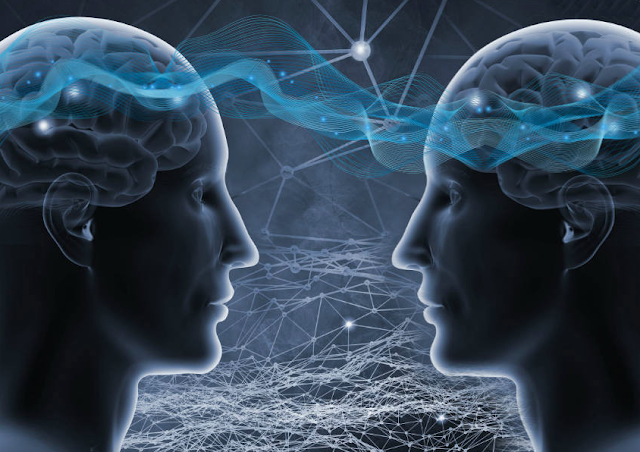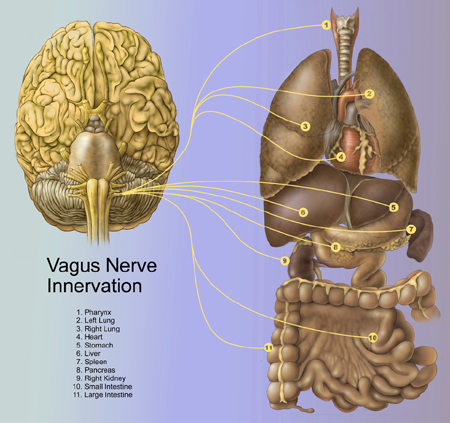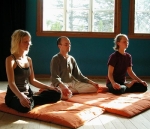Merkabah
- Thread starter Skarekrow
- Start date
You are using an out of date browser. It may not display this or other websites correctly.
You should upgrade or use an alternative browser.
You should upgrade or use an alternative browser.
Dream telepathy suggests that human beings have the ability to communicate telepathically with another person while they are dreaming.
This isn’t a new concept, scientific interest in telepathy dates back to the fathers of the psychoanalytic movement.
Freud, for example, looked at the implications of telepathy on psychoanalytic thought.
He also considered dream telepathy, or the telepathic influence of thought on dreaming, on multiple occasions.
Carl Jung believed in the telepathic hypothesis without question, and even developed a theoretical system to explain “paranormal” events of this nature.
It seems that all great minds encourage the study of various types of non-physical phenomena.
“The day science begins to study non-physical phenomena, it will make more progress in one decade than in all the previous centuries of its existence.” – Nikola Tesla
According to Stanley Krippner, Ph.D. and professor of psychology at Saybrook University in California:
A wealth of anecdotal and clinical material exist which supports the possibility of telepathic effects occurring in dreams (Krippner, 1974).
However, an experimental approach to the topic did not become possible until psycho physiological laboratory technology became available.
It was discovered that sleeping research participants awakened from periods of rapid eye movement (REM) activity were frequently able to recall dream episodes.
As a result, it was possible to request a “telepathic receiver” to attempt dreaming about a target stimulus that was being focused on in a distant location from a “telepathic sender.”
Experiments and Results
In the mid 1960’s, Montague Ullman, MD, began a number of experiments at Maimonides Medical Center in Brooklyn, New York to test the hypothesis that people could be primed to dream about randomly selected material.
In other words, they could choose what they wanted to dream about before going to sleep, and this could include anything, from artwork to movies to photographs and more.
Shortly after these experiments began, Ullman was joined by Stanley Krippner (quoted above), who has a very impressive background in the scientific study of dreams, psychology, and parapsychology.
The experiments they conducted lasted a span of more than 10 years, and “yielded statistically significant results.”
During the experiments, there was usually a “telepathic sender” and a “telepathic receiver.”
They met in the laboratory for a short period of time before being placed in completely separate rooms just before going to sleep.
The telepathic sender had an envelope waiting for them in the room in which they’d sleep.
It would contain something like a picture or a drawing.
The receivers were then purposely awakened shortly after Rapid Eye Movement sleep (REM) began so the researchers could take a dream report.
A Very Significant Session
One very memorable and significant session of dream telepathy experimentation took place where the selected art print was “School of Dance” by Edgar Degas, which depicts a several young women in a dance class. According to Krippner, the receivers’ dream reports included such phrases as “I was in a class made up of maybe half a dozen people, it felt like a school,” and “There was one little girl that was trying to dance with me.”
These results are fascinating, and the idea that one can influence another’s dream opens up a lot of doors. Although we might not understand the process behind the transfer of information, and we can’t see this transfer take place from mind to mind, we have proof of it occurring.
This is quite common when we examine scientific studies that have evaluated parapsychological phenomena – we know what is happening, but not how.
Another significant session conducted by Krippner and Ullman took place on March 15th, 1970.
In this session, a large group of people at a Holy Modal Rounders rock concert was selected to send something telepathically.
A local media artist by the name of Jean Millay took responsibility to ready the telepathic senders for “target preparation.”
She did this with help from the Lidd Light Company, a group of artists who were responsible for the light show at the concert.
Millay gave the audience a brief verbal set of directions before the image was flashed on the large screen that the telepathic senders were looking at.
Six slide projectors were used to project a colour film about eagles and their nesting habits, as well as information about various birds from around the world (including birds from mythology, like the phoenix).
This all happened at the same time Holy Modal Rounders were playing their song, “If you want to be a bird.”
There were five volunteer telepathic receivers for this experiment, and they were all located within a one hundred mile radius from the telepathic senders.
All of the receivers were aware of the concert location and were told to record their images at midnight, because that was when the material would be sent to them.
According to Krippner:
One “telepathic receiver,” Helen Andrews, had the impression of “something mythological, like a griffin or a phoenix.”
The second, third and fourth research participants reported images of “a snake,” “grapes,” and “an embryo in flames.”
The fifth participant was Richie Havens, the celebrated American singer and recording artist, who reported closing his eyes at midnight and visualizing “a number of seagulls flying over water.”
Both Mr. Havens’ and Ms. Andrews’ reports represented direct correspondences with the target material.
More remarkable results were seen when the rock group “Grateful Dead” also volunteered to participate in a dream telepathy session over a span of six nights.
These results were actually published by the American Psychological Association.
These are usually the instructions given to subjects who participate in these experiments:
1. You are about to participate in an ESP experiment.
2. In a few seconds you will see a picture.
3. Try using your ESP to “send” this picture to the receiver.
4. The receiver will try to dream about this picture. Try to “send” it to them.
5. Then, receivers will be made aware of the sender’s location.
Possible Explanations?
Quantum physics has shed light on the vast interconnectedness of everything in the universe.
One possible explanation is quantum entanglement.
For example, consider two electrons that are created together. If you send one to the other side of the universe, the other will respond instantly, regardless of their distance from each other.
This is one way of interpreting how everything is really connected in some way.
Einstein called it “spooky actions at a distance.”
The truth of the matter is that we have no way to explain how this works.
The researchers involved were only able to observe and record what was taking place, which again, is very common for parapsychological phenomenon.
At the same time, these experiments involve dreams, a completely different and altered state of “reality” that we really don’t know much about.
It’s a world separate (or at least we think is separate) from the world in which we are “awake” (although, of course, the world we perceive when we are awake could very well be just a dream).
Parasychological Phenomena Have Been Proven and Documented All Over The World
Parapsychological (PSI) phenomena have been studied, documented, observed, and proven (over and over again) by a number of renowned scientists in laboratories all over the world.
The Department of Defense has had a huge interest in this subject (and has studied it) for a number of years, yet the scientific study of it is concealed from the public and left out of universities and mainstream science, which is not fair, and not right.
It isn’t as though this information is inaccessible to us, some of this documentation and these publications are available in the public domain.
How Hermetic Initiates Used Magick to Study Reality
An introduction to Hermetic philosophy, the lost field of scientific investigation into magick, alchemy and the hidden nature of reality
Alchemy is tradition spanning millennia that influenced the development of modern chemistry, medicine, philosophy and psychology.
Western alchemy blends Greek, Egyptian, Islamic and Jewish traditions, and is a branch of Hermetic philosophy, which is based on the works of Hermes Trismegistus, meaning “Thrice-Great” Hermes.
It’s debated why Hermes Trismegistus was called “Thrice-Great,” but it’s thought that it was because he knows three parts of the wisdom of the universe: alchemy (the operation of the sun), astrology (the operation of the stars) and theurgy (the operation of the gods).
Hermes credited the creation of astrology to Zoroaster, founder of the Zoroastrian religion and Middle Eastern philosopher living sometime in the second half of the 2nd millennium BC.
Hermes Trismegistus is considered the founder of science, religion, mathematics, geometry, alchemy, philosophy, medicine and magic.
He is a combination of the Egyptian diety Thoth, god of wisdom, learning and communications, and the Greek diety Hermes, messenger of the gods.
He is also credited to have written somewhere between 20,000 and 36,525 works, of which 42 were kept in the great Library of Alexandria, which was destroyed multiple times.
Unfortunately, but against all odds, a small handful of Hermes’ texts remain today, most of which are compiled into the Corpus Hermeticum.
It is said that Hermes Trismegistus received his divine wisdom in meditative trances.
He covered topics such as medicine, chemistry, law, art, music, magic, philosophy, geography, mathematics and anatomy.
His knowledge was so vast and all-encompassing that the ancient Egyptians called him the messenger or communicator of the gods.
Who Was Hermes Trismegistus?
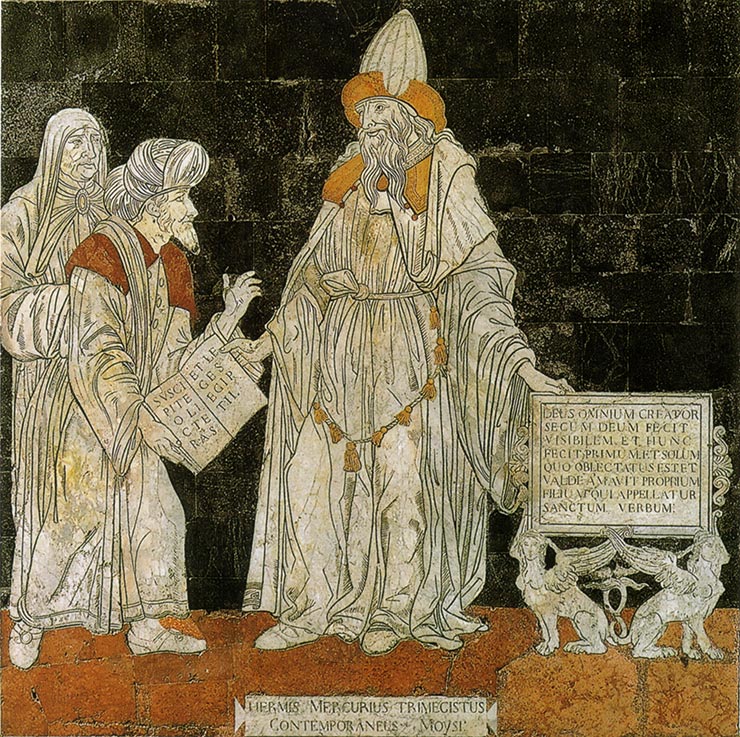

Hermes Trismegistus may have been an actual living king, philosopher and priest, as well as a sage, scientist and sorcerer.
He was known by many names, and was considered to be an amalgamation of several people and mythological figures of ancient history.
The main function of the various “incarnations” of Hermes is to transcribe the word of God, and his main symbol is the caduceus or serpent staff.
Historical and mythological figures associated with Hermes Trismegistus included:
Thoth (Egyptian Paganism)
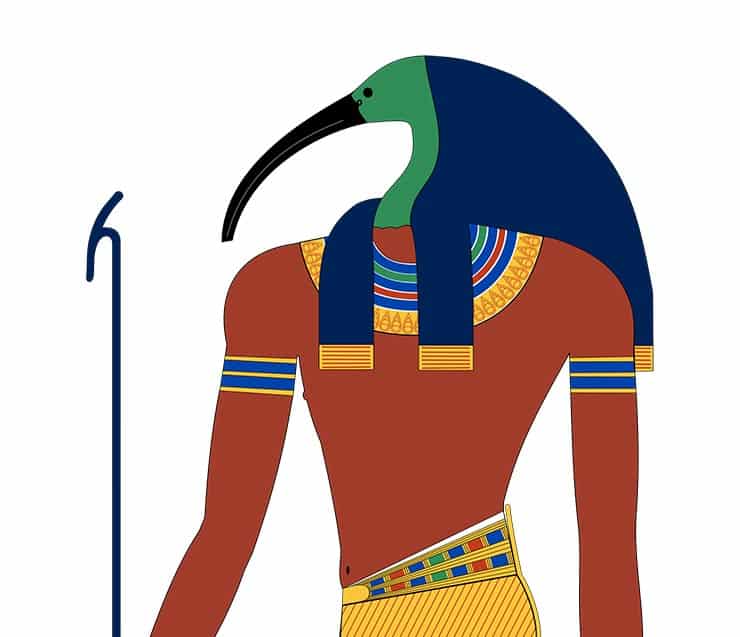

Egyptian god of wisdom, learning and communications.
He is the scribe of the gods, and was believed to have invented language, the alphabet and writing (i.e. hieroglyphs).
The Egyptians credit him as the author of all works of science, philosophy, religion, wisdom and magic.
It is believed that Thoth would have actually been an Egyptian priest-king and philosopher who would have lived somewhere around 2000-1200 BC.
Hermes (Greek Paganism)
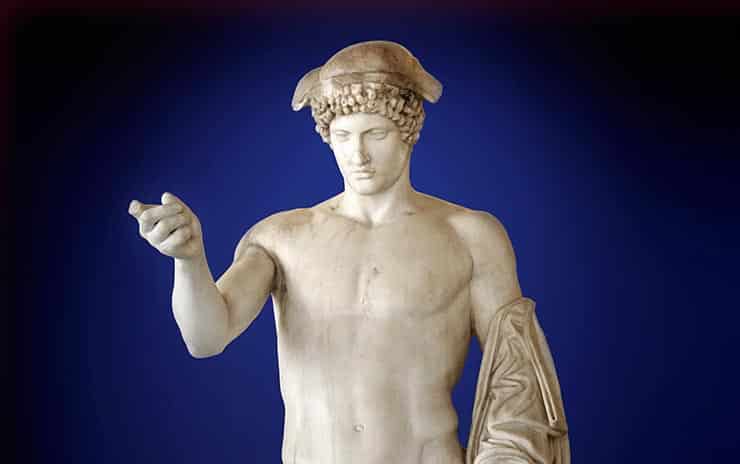

The Greeks identified Thoth with Hermes, the son of Zeus and the god of science, commerce, language and writing, as well as the messenger of the gods and the first teacher of alchemy.
Hermes was also believed to be the inventor of astronomy, astrology, mathematics, geometry, medicine, botany, theology and all branches of knowledge.
Mercury (Roman Paganism)
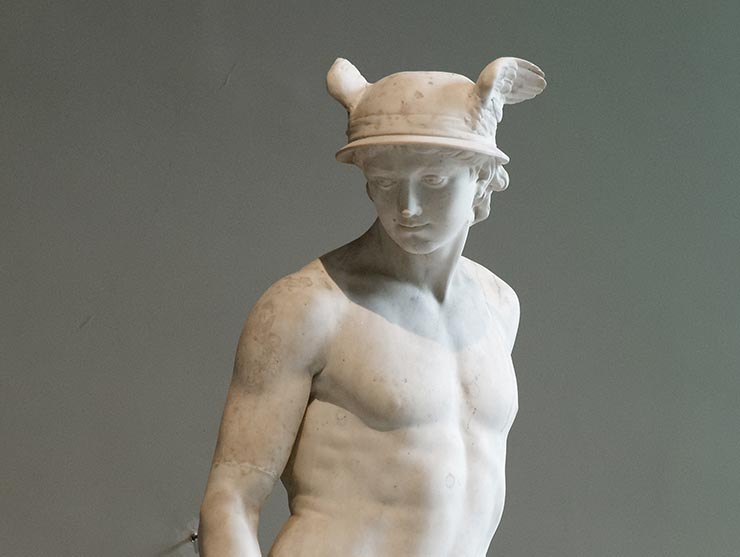

The Roman adaptation of Hermes is the god Mercury, who is the patron of commerce.
Enoch/Metatron (Biblical figure in Judaism and Christianity)
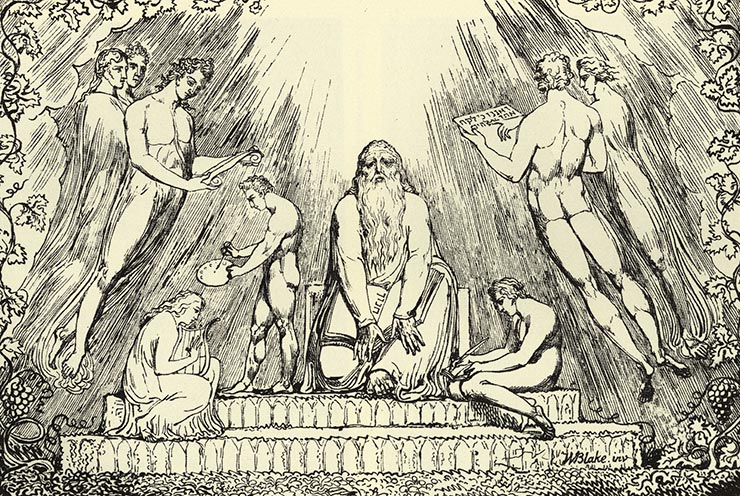

Enoch is the great grandfather of Noah who ascends to heaven and becomes the archangel Metatron, celestial scribe.
Idris (Prophet in Islam)
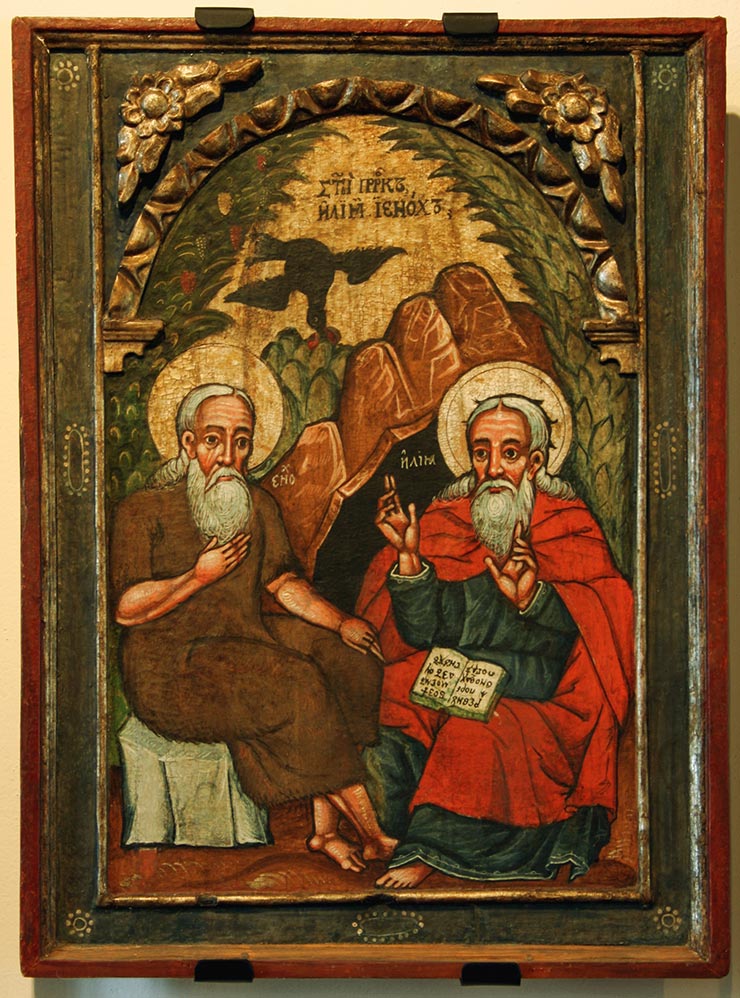

Synonymous with Enoch.
Moses (Judaism, Islam & Christianity)
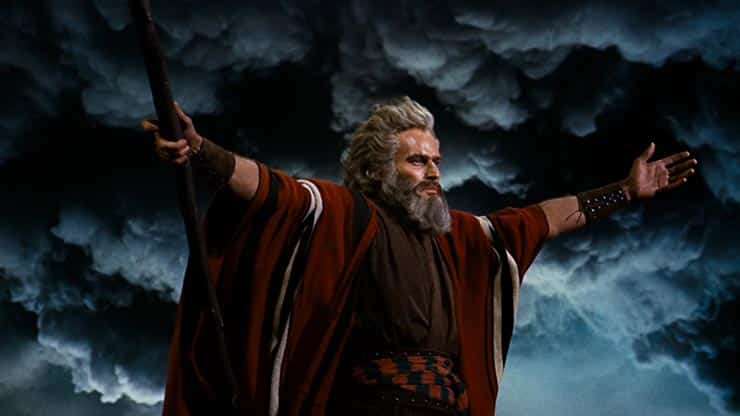

Moses was an Egyptian prince of Hebrew heritage, who lived in Egypt somewhere between 2000-1200 BC. He established a monotheistic religion in pagan Egypt but was forced to exile.
He is credited with the writing of the Torah and the Ten Commandments, which were given by God through Moses.
Akhenaten (Egyptian Pharaoh; reigned from 1353–1336 BC)
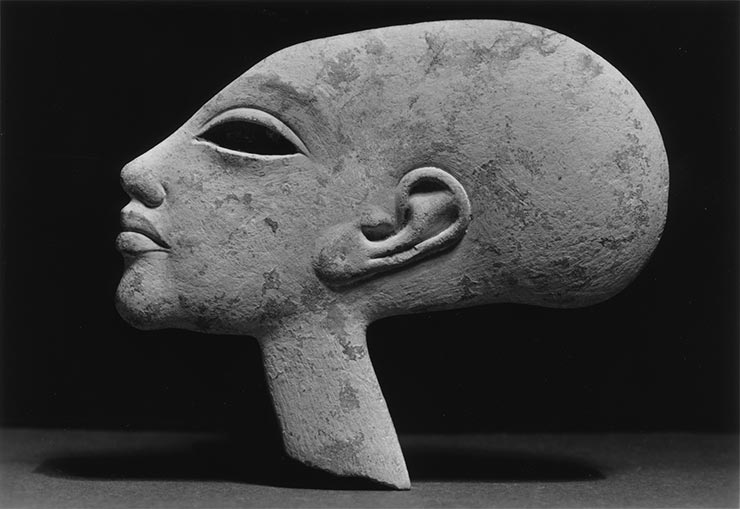

He attempted to make pagan Egypt monotheistic under one sun god.
His mother, Tuy, was likely of Hebrew origin and he was driven out of Egypt like Moses.
The city with the most Statues of Akhenaten is the the city of Hermopolis, which is dedicated to Hermes Trismegistus.
Nabu (Babylonian)
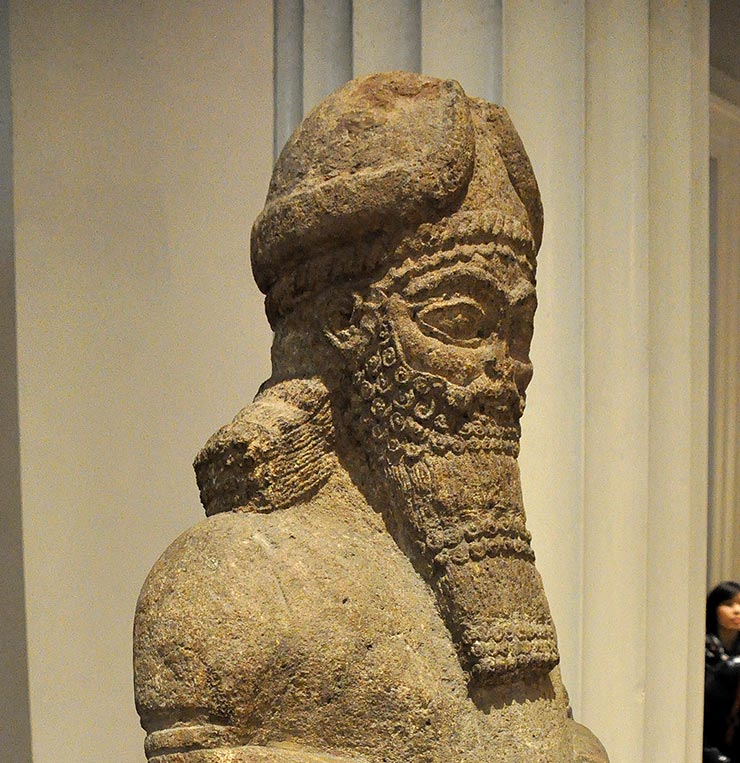

God of writing and wisdom, scribe of Marduk and keeper of the Tablets of Destiny.
In the modern day, the term “Hermetically sealed” is commonly used to mean airtight and impervious to gases.
The word “Hermetic” today typically means secret or sealed.
Hermeticism was generally veiled in secrecy, and only those who were truly ready could receive the Hermetic teachings.
Hermes is also said to have had magical powers that could seal a box or chest is such a way that it could never be opened.
Hermes’ symbol, the caduceus, is also the modern symbol of commerce and medicine.
Hermetic Philosophy
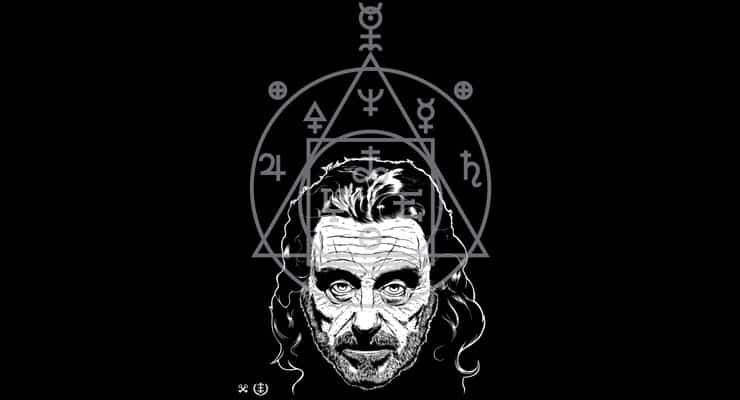

Hermetic philosophy, or Hermeticism, is one of the oldest religious and philosophical traditions, a synthesis of religion, philosophy, that flourished in Ptolomaic Egypt.
Hermeticism was not embodied in a single religious group, but instead was a philosophical system that is at the root of many traditions, some of which are still alive today!
Hermeticism is a blend of ancient Egyptian religion, philosophy, science and magic, with elements of Greek Paganism, Alexandrian Judaism, ancient Sumerian religion and Chaldaean astrology/astronomy, and Zoroastrianism.
It is associated with the philosophical schools of Platonism, Neo-Platonism, Stoicism and Pythagorianism.
Hermeticism is said to hold “prisca theologia,” a doctrine that claims a true theology at the root of all religions that was given to man in antiquity.
The Hermeticists believe in one transcendent God, and that “All is One” in the universe, though they also believe in the existence of other beings such as aeons, angels and elementals.
Hermeticism influenced Judaism, Islam and Christianity, especially the early Christian Gnostics, who were considered heretics.
The Destruction of Hermetic Wisdom
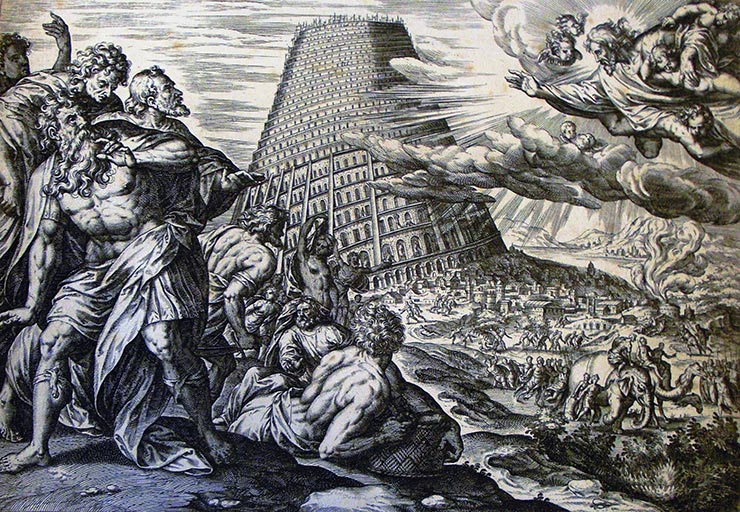

Much of the Hermetic and alchemical literature was destroyed, and the remainder shifted to the Islamic world in 400-600 AD, eventually emerging in medieval Europe and through the Renaissance.
The Christians, starting with Emperor Constantine and his successors, erased almost every trace of Hermeticism from 312 AD until well into the 6th century, putting to death thousands of pagans, many of whom were Hermetic, and destroying temples and sacred texts.
Being opposed by the Church, the Hermetic tradition was forced into the occult underground, and now permeates Western esoteric traditions.
This includes secret societies such as the Freemasons, Rosicrucians, Hermetic Order of the Golden Dawn, Thelema, as well as modern Paganism, New Age and Wicca.
The Theosophical Society, the philosophy behind the Waldorf/Rudolf Steiner schools, is also influenced by Hermetic philosophy.
Hermeticism’s Influence on the Scientific Revolution
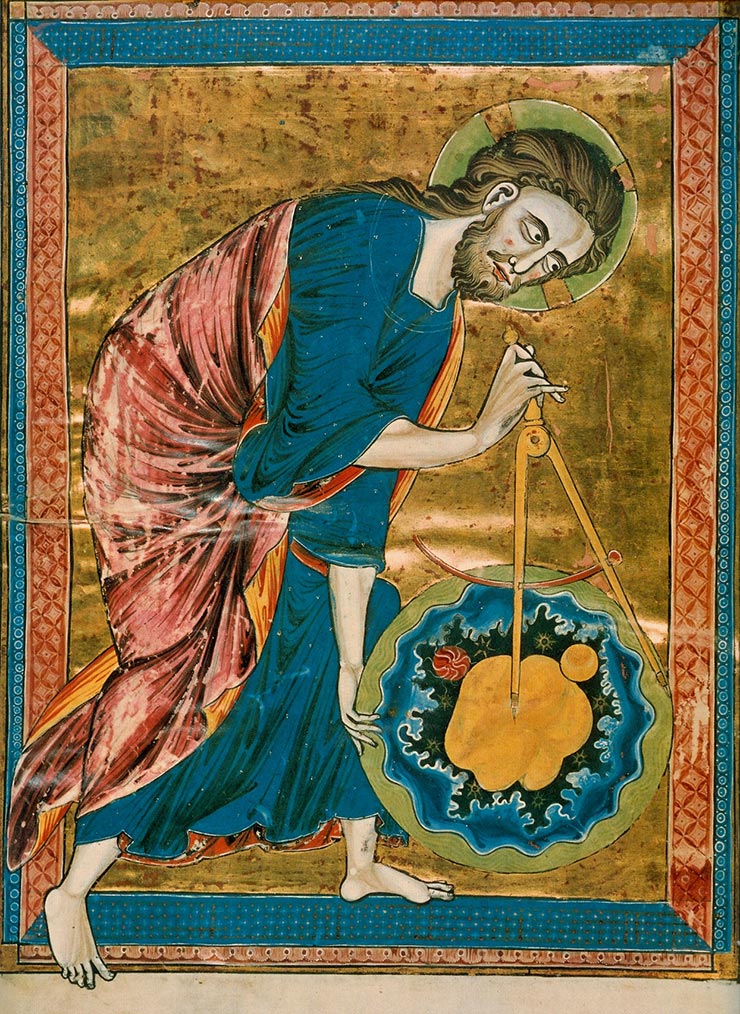

The Greek philosopher, mathematician and astronomer Pythagoras (570 – 495 BC) was said to be an initiate to the Hermetic arts, which he studied in Egypt.
Plato (424/423 – 348/347 BC) was deeply influenced by Pythagoras, and was also inspired by the Hermetic teachings; some claim he also studied with the Egyptian masters.
Both Pythagoras and Plato were influential for early modern scholars of the Scientific Revolution.
The Greek philosopher and scientist Aristotle studied at Plato’s Academy in Athens from 328 – 347 BC.
He taught Alexander the Great starting in 343 BC, who conquered Egypt in 331 BC and founded Alexandria, a hub for alchemy and Hermeticism.
Contrary to popular belief, Hermeticism, Neoplatonic mysticism and natural magic had a remarkable influence on the Scientific Revolution, which began in the Renaissance period.
The Scientific Revolution embraced empiricism, reason and open inquiry over faith, mysticism, or dogma. Ironically, the Renaissance saw a resurgence of Hermetic ideas, as well as in mythical, metaphorical and magical ways of thinking.
Indeed, the fathers of the modern science and the scientific method were deeply religious and many were alchemists and esotericists, traditions rooted in Hermeticism.
Hermetic principles can be seen in the works of luminaries such as Nicolaus Copernicus, Johannes Kepler, Robert Boyle, Isaac Newton and Francis Bacon, as well as medieval philosophers, notably Roger Bacon, but also Islamic philosophers like Al-Kindi and Avicenna.
Copernicus, who presented the first predictive mathematic model for a heliocentric system, describes the sun:
In the middle of all sits the Sun enthroned.
In this most beautiful temple could we place this luminary in any better position from which he can illuminate the whole at once?
He is rightly called the Lamp, the Mind, the Ruler of the Universe; Hermes Trismegistus names him the Visible God, Sophocles’ Electra calls him the All-seeing.
So the Sun sits as upon a royal throne ruling his children the planets which circle around him.
Isaac Newton, the father of modern physics, spent most of his time rediscovering the occult wisdom of the ancients, including the Corpus Hermeticum and the Emerald Tablet.
He was a devout scholar and practitioner of alchemy, which greatly influenced his scientific work, including the laws of motion, the theory of gravity, his work on optics and the invention of calculus.
Although there is a link between the celestial and terrestrial realms in Hermeticism (“As above, so below”), there is also the central idea of progress of knowledge and advancement of learning.
In the Hermetic tradition, nature is investigated through observation, experiment and illumination.
The purpose is to discover and detect that which is invisible and find the hidden linkages between things.
The magical tradition within Hermeticism endeavors to discover the influence of one thing over another, to understand phenomena and learn how to manipulate them.
Paracelsus was a Renaissance physician, surgeon, botanist, astrologer, alchemist, and is considered the founder of toxicology.
He wrote the famous phrase “The dose makes the poison.”
Paracelsus had an affinity for Hermetic, Neo-Platonic and Pythagorean philosophy.
He advocated that the final arbiter for a theory should be experience, and that humility and diligent labor is necessary.
He can be surprised by an anomaly—like a white raven—which confounds all the books; and all his experience, everything he has learned at the sickbed, is suddenly gone.
Therefore study each day without respite, investigate and observe diligently; despise nothing, and do not lightly put too much trust in yourself.
Do not be arrogant. – Paracelsus
The Separation of Spirit and Science
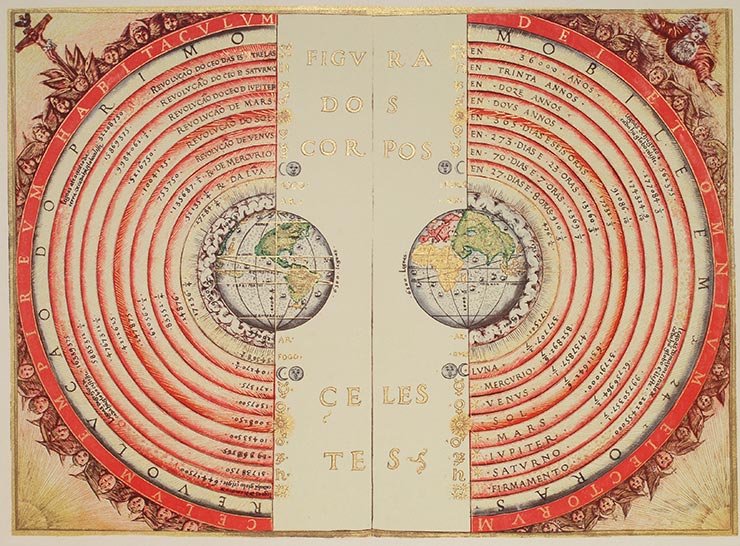

While Hermeticism was influential in the rise of modern experimental science, part of the Hermetic tradition had to be repudiated in order for science to emerge.
This includes a separation of science from religion and the spiritual world, as well as removing illumination as a way of obtaining knowledge.
Until the mid-17th century, natural philosophy generally described nature as an organic, dynamic, living, interconnected organism.
There was no clear distinction between astronomy and astrology; alchemy and chemistry; science and magic.
The Scientific Revolution separated these disciplines and brought a mechanistic view of nature, a focus on rational and logical thought, and a separation of religion and spirituality from the pursuit of knowledge.
In science, a phenomenon that is being observed is separated from the soul and the internal value system of the observer.
When science observes a phenomenon, it assumes that is its true nature; the perceptual is the actual. However, in the modern fields of relativistic and quantum physics, observation affects the process being observed, with a different outcome than if the process were unobserved.
In Hermeticism, that which is being studied is a reflection of the observer and the two are intrinsically linked. This is central to Hermetic philosophy as seen in the famous phrase “As above, so below”: the universe is a symbolic reflection of what is happening inside of ourselves.
The quest for knowledge becomes a spiritual journey to return to a state of unity with the divine, known as the “Great Work” of humankind.
All are one.
As above, so below.
@Dragon @Kgal (I think you would be interested also)
The vagus nerve,
emotions and the difficulty with mindfulness practices
Last week, during a two-day deep cleaning/paint prep binge (see the kitchen ceiling to the right!), I listened to a recorded talk by Bessel van der Kolk given at the May 2011 22nd Annual International Trauma Conference.
The title of van der Kolk’s title is a mouthful: “Putting neuroplasticity into clinical practice with neurofeedback: rewiring the brains of children and adults who lack safety, self-regulation, capacity for play, and executive functioning.”
The lecture in itself was interesting enough to keep me attentive for its length, but what particularly captured my interest is the manner in which he described the relationship of the vagus nerve to our emotions.
As I remembered from anatomy, the vagus nerve (cranial nerve x) innervates the diaphragm but what failed to register in class is that the vagus nerve also innervates much of our viscera – in fact all of our internal organs with the notable exception of the adrenal glands.
It supplies parasympathetic fibers to these organs, meaning that the vagus nerve is a “rest and digest” nerve, not a fight or flight nerve.
Van der Kolk quotes from Darwin’s work, “the heart, guts and brain communicate intimately via a nerve” – the pneumogastric or vagus nerve – “the critical nerve in the expression and management of emotions in both humans and animals…. When the mind is strongly excited it instantly affects the state of the viscera.”
This is, of course, why our guts react strongly to our emotional state.
Van der Kolk continues with the statement that grabbed me: “what makes life unbearable is not emotions but physical sensations.”
“When you have a persistent sense of heartbreak and gutwrench, the physical sensations become intolerable and we will do anything to make those feelings disappear.
And that is really the origin of what happens in human pathology.
People take drugs to make it disappear, and they cut themselves to make it disappear, and they starve themselves to make it disappear, and they have sex with anyone who comes along to make it disappear and once you have these horrible sensations in your body, you’ll do anything to make it go away.”
“If these sensations last long enough, your whole brain starts fighting against emotions.
And what happens in the long range is that traumatized people who continuously have a state of heartbreak and gut wrenching feelings learn to shut off the sensations in their bodies.
And they go through life not feeling their physical presence.”
He then touches on a very important point and one that strongly resonates with me – “it’s a beginning of understanding why traumatized people have such a hard time with mindfulness and why mindfulness in principle doesn’t work for traumatized people because they cannot feel.”
Van der Kolk had sent many of his highly traumatized patients to do mindfulness exercises with Jon Kabat-Zinn and found that many of them were returning in a state of upset and agitation.
“As they became silent and started to pay attention to themselves, they get overwhelmed with the physical sensations and they would flee, because being mindful means that you get confronted with your internal world.”
In other words, the sensations of the internal world can be so intense that, lacking the tools to work through those sensations, people dissociate during mindfulness exercises.
This is not limited to mindfulness exerces but happens in other types of movement, meditative, or healing practices, such as qigong, yoga or massage.
What van der Kolk has found to be a useful tool for moving through this difficulty is neurofeedback, which helps individuals learn to self-regulate by utilizing a feedback tool very similar to a video game that rewards the user for achieving target states such as relaxation, alertness, or focus (for more information on neurofeedback, see http://www.eeginfo.com/).
While neurofeedback is a very useful tool and may be a major breakthrough in trauma recovery, it is not always easy to access.
Although I am less familiar with them, there are other therapies such as Hakomi method and Somato Emotional Release that help individuals work with the emotions and physical sensations that often trigger dissociation.
A major focus of my studies at this point is to understand better how Chinese/Traditional East Asian medicine works with trauma and the emotions.
I suspect that many different modalities can be useful for learning to be present and integrated with our bodies, but also argue that the role of the practitioner and power of intention are key ingredients in the process.
I also believe that bodywork and somatic re-education (acupuncture, massage, tuina, qigong, sotai, et) are essential components to releasing and restoring function to tissues and organs that have lost mobility due to years of fleeing from those physical sensations that van der Kolk describes.
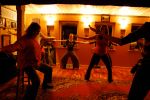
We may learn to stay present with our physical sensations, but if the diaphragm is hypertonic (or too tight, just like your shoulders) or the stomach can’t move properly in the abdominal cavity, we will have to work really hard to achieve calm presence when we could instead work to unblock stagnation and release tissues.
However, the issue is often truly much more complex than this and healing for many people occurs not by a magic button but through many interwoven processes that may include acupuncture, movement work, EMDR, neurofeedback, nutritional counseling, talk therapy, and meditation or mindfulness practices.
I’ve been unable to get Van der Kolk’s talk out of my mind.
Although none of the concepts are unfamiliar to me, there is a sense that I’m missing something or that this visceral-emotional relationship needs to be more closely explored.
In Traditional East Asian Medicine (TEAM), the emotions closely affect and are affected by the viscera but I have yet to truly explore the many classical references to this relationship.
Spending some time sitting with the classics may help shed some light on how and why acupuncture, moxibustion and other TEAM modalities have been known to treat trauma and shock.
A worthwhile topic to explore next.
The vagus nerve,
emotions and the difficulty with mindfulness practices
“Now, many people who don’t know a lot about trauma think that trauma has something to do with something that happened to you a long time ago.
In fact, the past is the past and the only thing that matters is what happens right now.
And what is trauma is the residue that a past event leaves in your own sensory experiences in your body and it’s not that event out there that becomes intolerable but the physical sensations with which you live that become intolerable and you will do anything to make them go away.”
(Bessel van der Kolk)
In fact, the past is the past and the only thing that matters is what happens right now.
And what is trauma is the residue that a past event leaves in your own sensory experiences in your body and it’s not that event out there that becomes intolerable but the physical sensations with which you live that become intolerable and you will do anything to make them go away.”
(Bessel van der Kolk)
Last week, during a two-day deep cleaning/paint prep binge (see the kitchen ceiling to the right!), I listened to a recorded talk by Bessel van der Kolk given at the May 2011 22nd Annual International Trauma Conference.
The title of van der Kolk’s title is a mouthful: “Putting neuroplasticity into clinical practice with neurofeedback: rewiring the brains of children and adults who lack safety, self-regulation, capacity for play, and executive functioning.”
The lecture in itself was interesting enough to keep me attentive for its length, but what particularly captured my interest is the manner in which he described the relationship of the vagus nerve to our emotions.
As I remembered from anatomy, the vagus nerve (cranial nerve x) innervates the diaphragm but what failed to register in class is that the vagus nerve also innervates much of our viscera – in fact all of our internal organs with the notable exception of the adrenal glands.
It supplies parasympathetic fibers to these organs, meaning that the vagus nerve is a “rest and digest” nerve, not a fight or flight nerve.
Van der Kolk quotes from Darwin’s work, “the heart, guts and brain communicate intimately via a nerve” – the pneumogastric or vagus nerve – “the critical nerve in the expression and management of emotions in both humans and animals…. When the mind is strongly excited it instantly affects the state of the viscera.”
This is, of course, why our guts react strongly to our emotional state.
Van der Kolk continues with the statement that grabbed me: “what makes life unbearable is not emotions but physical sensations.”
“When you have a persistent sense of heartbreak and gutwrench, the physical sensations become intolerable and we will do anything to make those feelings disappear.
And that is really the origin of what happens in human pathology.
People take drugs to make it disappear, and they cut themselves to make it disappear, and they starve themselves to make it disappear, and they have sex with anyone who comes along to make it disappear and once you have these horrible sensations in your body, you’ll do anything to make it go away.”
“If these sensations last long enough, your whole brain starts fighting against emotions.
And what happens in the long range is that traumatized people who continuously have a state of heartbreak and gut wrenching feelings learn to shut off the sensations in their bodies.
And they go through life not feeling their physical presence.”
He then touches on a very important point and one that strongly resonates with me – “it’s a beginning of understanding why traumatized people have such a hard time with mindfulness and why mindfulness in principle doesn’t work for traumatized people because they cannot feel.”
Van der Kolk had sent many of his highly traumatized patients to do mindfulness exercises with Jon Kabat-Zinn and found that many of them were returning in a state of upset and agitation.
“As they became silent and started to pay attention to themselves, they get overwhelmed with the physical sensations and they would flee, because being mindful means that you get confronted with your internal world.”
In other words, the sensations of the internal world can be so intense that, lacking the tools to work through those sensations, people dissociate during mindfulness exercises.
This is not limited to mindfulness exerces but happens in other types of movement, meditative, or healing practices, such as qigong, yoga or massage.
What van der Kolk has found to be a useful tool for moving through this difficulty is neurofeedback, which helps individuals learn to self-regulate by utilizing a feedback tool very similar to a video game that rewards the user for achieving target states such as relaxation, alertness, or focus (for more information on neurofeedback, see http://www.eeginfo.com/).
While neurofeedback is a very useful tool and may be a major breakthrough in trauma recovery, it is not always easy to access.
Although I am less familiar with them, there are other therapies such as Hakomi method and Somato Emotional Release that help individuals work with the emotions and physical sensations that often trigger dissociation.
A major focus of my studies at this point is to understand better how Chinese/Traditional East Asian medicine works with trauma and the emotions.
I suspect that many different modalities can be useful for learning to be present and integrated with our bodies, but also argue that the role of the practitioner and power of intention are key ingredients in the process.
I also believe that bodywork and somatic re-education (acupuncture, massage, tuina, qigong, sotai, et) are essential components to releasing and restoring function to tissues and organs that have lost mobility due to years of fleeing from those physical sensations that van der Kolk describes.

We may learn to stay present with our physical sensations, but if the diaphragm is hypertonic (or too tight, just like your shoulders) or the stomach can’t move properly in the abdominal cavity, we will have to work really hard to achieve calm presence when we could instead work to unblock stagnation and release tissues.
However, the issue is often truly much more complex than this and healing for many people occurs not by a magic button but through many interwoven processes that may include acupuncture, movement work, EMDR, neurofeedback, nutritional counseling, talk therapy, and meditation or mindfulness practices.
I’ve been unable to get Van der Kolk’s talk out of my mind.
Although none of the concepts are unfamiliar to me, there is a sense that I’m missing something or that this visceral-emotional relationship needs to be more closely explored.
In Traditional East Asian Medicine (TEAM), the emotions closely affect and are affected by the viscera but I have yet to truly explore the many classical references to this relationship.
Spending some time sitting with the classics may help shed some light on how and why acupuncture, moxibustion and other TEAM modalities have been known to treat trauma and shock.
A worthwhile topic to explore next.
(Skarekrow - I could not find the talk which the article speaks, but I hope this one will suffice.)
Last edited:
“If these sensations last long enough, your whole brain starts fighting against emotions.
And what happens in the long range is that traumatized people who continuously have a state of heartbreak and gut wrenching feelings learn to shut off the sensations in their bodies.
And they go through life not feeling their physical presence.”
Yes!!!!! I totally agree with this!
Although I am less familiar with them, there are other therapies such as Hakomi method and Somato Emotional Release that help individuals work with the emotions and physical sensations that often trigger dissociation.
Those ladies in the Shaman workshop I attended while in Portland OR utlized some kind of Emotional Release philosophy and would (with permission ahead of time) use their hands to assist the body in releasing deeply held emotions. They helped me to cry and release during one part when I was locked in a keening....and I also saw them help someone throw up. We had all been issued paper throw up bags and kleenex. It was an amazing workshop to say the least.
I left that day with no doubt in my mind our bodies hold emotional trauma.
I’ve been unable to get Van der Kolk’s talk out of my mind.
Although none of the concepts are unfamiliar to me, there is a sense that I’m missing something or that this visceral-emotional relationship needs to be more closely explored.
You're missing the valuable contribution of the Imagination.
Thanks for that @Skarekrow !
I actually read Van der Kolk's book. It is called The Body Keeps the Score, and it is really good.
I actually read Van der Kolk's book. It is called The Body Keeps the Score, and it is really good.
Those ladies in the Shaman workshop I attended while in Portland OR utlized some kind of Emotional Release philosophy and would (with permission ahead of time) use their hands to assist the body in releasing deeply held emotions. They helped me to cry and release during one part when I was locked in a keening....and I also saw them help someone throw up. We had all been issued paper throw up bags and kleenex. It was an amazing workshop to say the least.
I left that day with no doubt in my mind our bodies hold emotional trauma.
Did people just start like spontaneously throwing up or where they “assisting” by shoving their finger down someone’s throat?
hehe
Was it like working yourself up so much emotionally that you are physically ill?
Please elaborate.
I had a very clear picture of why I get ill in the morning so often...it has to do with work I’m doing with other people while I sleep.
Even Sensiko noticed the other night that I was moving my hands in strange ways in my sleep.
I get ill because I'm purging the energies that I take from people...then I feel fine for the rest of the day...I have gotten to that point now at least.
For a while it would last all day, and I think depending on who I’ve been working with holds some bearing.
But I have a good routine now of immediately meditating upon waking up...along with binaural beats.
I ground myself, or don’t ground myself - depending on what I feel I need at the time.
Anyhow, I remember quite clearly someone I was counseling in my dream-state.
This has me thinking in all kinds of new directions right now...not sure what to think tbh.
Maybe a dream is just a dream - though, why the reverse couldn’t be just as true is valid.
Curious what you think?
Or anyone else who happens to read this...
How Hermetic Initiates Used Magick to Study Reality
An introduction to Hermetic philosophy, the lost field of scientific investigation into magick, alchemy and the hidden nature of realityAlchemy is tradition spanning millennia that influenced the development of modern chemistry, medicine, philosophy and psychology.
Western alchemy blends Greek, Egyptian, Islamic and Jewish traditions, and is a branch of Hermetic philosophy, which is based on the works of Hermes Trismegistus, meaning “Thrice-Great” Hermes.
It’s debated why Hermes Trismegistus was called “Thrice-Great,” but it’s thought that it was because he knows three parts of the wisdom of the universe: alchemy (the operation of the sun), astrology (the operation of the stars) and theurgy (the operation of the gods).
Hermes credited the creation of astrology to Zoroaster, founder of the Zoroastrian religion and Middle Eastern philosopher living sometime in the second half of the 2nd millennium BC.
Hermes Trismegistus is considered the founder of science, religion, mathematics, geometry, alchemy, philosophy, medicine and magic.
He is a combination of the Egyptian diety Thoth, god of wisdom, learning and communications, and the Greek diety Hermes, messenger of the gods.
He is also credited to have written somewhere between 20,000 and 36,525 works, of which 42 were kept in the great Library of Alexandria, which was destroyed multiple times.
Unfortunately, but against all odds, a small handful of Hermes’ texts remain today, most of which are compiled into the Corpus Hermeticum.
It is said that Hermes Trismegistus received his divine wisdom in meditative trances.
He covered topics such as medicine, chemistry, law, art, music, magic, philosophy, geography, mathematics and anatomy.
His knowledge was so vast and all-encompassing that the ancient Egyptians called him the messenger or communicator of the gods.
Who Was Hermes Trismegistus?

Hermes Trismegistus may have been an actual living king, philosopher and priest, as well as a sage, scientist and sorcerer.
He was known by many names, and was considered to be an amalgamation of several people and mythological figures of ancient history.
The main function of the various “incarnations” of Hermes is to transcribe the word of God, and his main symbol is the caduceus or serpent staff.
Historical and mythological figures associated with Hermes Trismegistus included:
Thoth (Egyptian Paganism)

Egyptian god of wisdom, learning and communications.
He is the scribe of the gods, and was believed to have invented language, the alphabet and writing (i.e. hieroglyphs).
The Egyptians credit him as the author of all works of science, philosophy, religion, wisdom and magic.
It is believed that Thoth would have actually been an Egyptian priest-king and philosopher who would have lived somewhere around 2000-1200 BC.
Hermes (Greek Paganism)

The Greeks identified Thoth with Hermes, the son of Zeus and the god of science, commerce, language and writing, as well as the messenger of the gods and the first teacher of alchemy.
Hermes was also believed to be the inventor of astronomy, astrology, mathematics, geometry, medicine, botany, theology and all branches of knowledge.
Mercury (Roman Paganism)

The Roman adaptation of Hermes is the god Mercury, who is the patron of commerce.
Enoch/Metatron (Biblical figure in Judaism and Christianity)

Enoch is the great grandfather of Noah who ascends to heaven and becomes the archangel Metatron, celestial scribe.
Idris (Prophet in Islam)

Synonymous with Enoch.
Moses (Judaism, Islam & Christianity)

Moses was an Egyptian prince of Hebrew heritage, who lived in Egypt somewhere between 2000-1200 BC. He established a monotheistic religion in pagan Egypt but was forced to exile.
He is credited with the writing of the Torah and the Ten Commandments, which were given by God through Moses.
Akhenaten (Egyptian Pharaoh; reigned from 1353–1336 BC)

He attempted to make pagan Egypt monotheistic under one sun god.
His mother, Tuy, was likely of Hebrew origin and he was driven out of Egypt like Moses.
The city with the most Statues of Akhenaten is the the city of Hermopolis, which is dedicated to Hermes Trismegistus.
Nabu (Babylonian)

God of writing and wisdom, scribe of Marduk and keeper of the Tablets of Destiny.
In the modern day, the term “Hermetically sealed” is commonly used to mean airtight and impervious to gases.
The word “Hermetic” today typically means secret or sealed.
Hermeticism was generally veiled in secrecy, and only those who were truly ready could receive the Hermetic teachings.
Hermes is also said to have had magical powers that could seal a box or chest is such a way that it could never be opened.
Hermes’ symbol, the caduceus, is also the modern symbol of commerce and medicine.
Hermetic Philosophy

Hermetic philosophy, or Hermeticism, is one of the oldest religious and philosophical traditions, a synthesis of religion, philosophy, that flourished in Ptolomaic Egypt.
Hermeticism was not embodied in a single religious group, but instead was a philosophical system that is at the root of many traditions, some of which are still alive today!
Hermeticism is a blend of ancient Egyptian religion, philosophy, science and magic, with elements of Greek Paganism, Alexandrian Judaism, ancient Sumerian religion and Chaldaean astrology/astronomy, and Zoroastrianism.
It is associated with the philosophical schools of Platonism, Neo-Platonism, Stoicism and Pythagorianism.
Hermeticism is said to hold “prisca theologia,” a doctrine that claims a true theology at the root of all religions that was given to man in antiquity.
The Hermeticists believe in one transcendent God, and that “All is One” in the universe, though they also believe in the existence of other beings such as aeons, angels and elementals.
Hermeticism influenced Judaism, Islam and Christianity, especially the early Christian Gnostics, who were considered heretics.
The Destruction of Hermetic Wisdom

Much of the Hermetic and alchemical literature was destroyed, and the remainder shifted to the Islamic world in 400-600 AD, eventually emerging in medieval Europe and through the Renaissance.
The Christians, starting with Emperor Constantine and his successors, erased almost every trace of Hermeticism from 312 AD until well into the 6th century, putting to death thousands of pagans, many of whom were Hermetic, and destroying temples and sacred texts.
Being opposed by the Church, the Hermetic tradition was forced into the occult underground, and now permeates Western esoteric traditions.
This includes secret societies such as the Freemasons, Rosicrucians, Hermetic Order of the Golden Dawn, Thelema, as well as modern Paganism, New Age and Wicca.
The Theosophical Society, the philosophy behind the Waldorf/Rudolf Steiner schools, is also influenced by Hermetic philosophy.
Hermeticism’s Influence on the Scientific Revolution

The Greek philosopher, mathematician and astronomer Pythagoras (570 – 495 BC) was said to be an initiate to the Hermetic arts, which he studied in Egypt.
Plato (424/423 – 348/347 BC) was deeply influenced by Pythagoras, and was also inspired by the Hermetic teachings; some claim he also studied with the Egyptian masters.
Both Pythagoras and Plato were influential for early modern scholars of the Scientific Revolution.
The Greek philosopher and scientist Aristotle studied at Plato’s Academy in Athens from 328 – 347 BC.
He taught Alexander the Great starting in 343 BC, who conquered Egypt in 331 BC and founded Alexandria, a hub for alchemy and Hermeticism.
Contrary to popular belief, Hermeticism, Neoplatonic mysticism and natural magic had a remarkable influence on the Scientific Revolution, which began in the Renaissance period.
The Scientific Revolution embraced empiricism, reason and open inquiry over faith, mysticism, or dogma. Ironically, the Renaissance saw a resurgence of Hermetic ideas, as well as in mythical, metaphorical and magical ways of thinking.
Indeed, the fathers of the modern science and the scientific method were deeply religious and many were alchemists and esotericists, traditions rooted in Hermeticism.
Hermetic principles can be seen in the works of luminaries such as Nicolaus Copernicus, Johannes Kepler, Robert Boyle, Isaac Newton and Francis Bacon, as well as medieval philosophers, notably Roger Bacon, but also Islamic philosophers like Al-Kindi and Avicenna.
Copernicus, who presented the first predictive mathematic model for a heliocentric system, describes the sun:
In the middle of all sits the Sun enthroned.
In this most beautiful temple could we place this luminary in any better position from which he can illuminate the whole at once?
He is rightly called the Lamp, the Mind, the Ruler of the Universe; Hermes Trismegistus names him the Visible God, Sophocles’ Electra calls him the All-seeing.
So the Sun sits as upon a royal throne ruling his children the planets which circle around him.
Isaac Newton, the father of modern physics, spent most of his time rediscovering the occult wisdom of the ancients, including the Corpus Hermeticum and the Emerald Tablet.
He was a devout scholar and practitioner of alchemy, which greatly influenced his scientific work, including the laws of motion, the theory of gravity, his work on optics and the invention of calculus.
Although there is a link between the celestial and terrestrial realms in Hermeticism (“As above, so below”), there is also the central idea of progress of knowledge and advancement of learning.
In the Hermetic tradition, nature is investigated through observation, experiment and illumination.
The purpose is to discover and detect that which is invisible and find the hidden linkages between things.
The magical tradition within Hermeticism endeavors to discover the influence of one thing over another, to understand phenomena and learn how to manipulate them.
Paracelsus was a Renaissance physician, surgeon, botanist, astrologer, alchemist, and is considered the founder of toxicology.
He wrote the famous phrase “The dose makes the poison.”
Paracelsus had an affinity for Hermetic, Neo-Platonic and Pythagorean philosophy.
He advocated that the final arbiter for a theory should be experience, and that humility and diligent labor is necessary.
He can be surprised by an anomaly—like a white raven—which confounds all the books; and all his experience, everything he has learned at the sickbed, is suddenly gone.
Therefore study each day without respite, investigate and observe diligently; despise nothing, and do not lightly put too much trust in yourself.
Do not be arrogant. – Paracelsus
The Separation of Spirit and Science

While Hermeticism was influential in the rise of modern experimental science, part of the Hermetic tradition had to be repudiated in order for science to emerge.
This includes a separation of science from religion and the spiritual world, as well as removing illumination as a way of obtaining knowledge.
Until the mid-17th century, natural philosophy generally described nature as an organic, dynamic, living, interconnected organism.
There was no clear distinction between astronomy and astrology; alchemy and chemistry; science and magic.
The Scientific Revolution separated these disciplines and brought a mechanistic view of nature, a focus on rational and logical thought, and a separation of religion and spirituality from the pursuit of knowledge.
In science, a phenomenon that is being observed is separated from the soul and the internal value system of the observer.
When science observes a phenomenon, it assumes that is its true nature; the perceptual is the actual. However, in the modern fields of relativistic and quantum physics, observation affects the process being observed, with a different outcome than if the process were unobserved.
In Hermeticism, that which is being studied is a reflection of the observer and the two are intrinsically linked. This is central to Hermetic philosophy as seen in the famous phrase “As above, so below”: the universe is a symbolic reflection of what is happening inside of ourselves.
The quest for knowledge becomes a spiritual journey to return to a state of unity with the divine, known as the “Great Work” of humankind.
All are one.
As above, so below.
I believe you must have a lot of faith in things you have studied, or at the least have read. It insults Christianity. Moses and a sun god? People should be more cautious what they read.
Did people just start like spontaneously throwing up or where they “assisting” by shoving their finger down someone’s throat?
hehe
Was it like working yourself up so much emotionally that you are physically ill?
Please elaborate.
I had a very clear picture of why I get ill in the morning so often...it has to do with work I’m doing with other people while I sleep.
Even Sensiko noticed the other night that I was moving my hands in strange ways in my sleep.
I get ill because I'm purging the energies that I take from people...then I feel fine for the rest of the day...I have gotten to that point now at least.
For a while it would last all day, and I think depending on who I’ve been working with holds some bearing.
But I have a good routine now of immediately meditating upon waking up...along with binaural beats.
I ground myself, or don’t ground myself - depending on what I feel I need at the time.
Anyhow, I remember quite clearly someone I was counseling in my dream-state.
This has me thinking in all kinds of new directions right now...not sure what to think tbh.
Maybe a dream is just a dream - though, why the reverse couldn’t be just as true is valid.
Curious what you think?
Or anyone else who happens to read this...
Hahahaha...ahh...no fingers were put anywhere inappropriately.
Was it like working yourself up so much emotionally that you are physical ill?
I would say that is an aspect of the experience.
It's more like that old saying "working yourself up to give your self courage" and then take an action you're afraid of....such as allowing those intense emotions to come up out of the dark places within.
Your sharing of how the Vagus Nerve at the base of the brain is connected to various systems in the body ties right in with what I witnessed during that Shaman led event.
Have you ever been so emotional your body starting rocking back and forth or side to side of its own volition?
Surely you can see why a loving person rocks a baby to sleep?
These back and forth movements also have connections with one of the best therapeutic methods for easing PTSD...which is EMDR.
Alternating movements help sync the Left Brain with the Right Brain.
Anway...So yeh... puking up the pain is pretty much what was happening in that room....and I was in amazement of what healed there that day. Sheer amazement at the power of the Shamanic journey and the ability of the Human to heal themselves using their imaginations.
Oooo...[grins like a maniac] They're utilizing you in your sleep now? Woohoo! That's soooo very exciting to see happening. Oh yes... I totally believe you and what your Intuition is telling you. We've been meeting with Teams during our sleeping hours as we perform our roles during this Shift for a while now according to most sources I view. I myself "popped" into a meeting of the Team late last year(I think it was then) where we were being instructed on how to help the Humans.
For me...the fact you are now remembering your dreams....or more accurately....you are allowing your self to become conscious of that multi dimensional aspect of your activity....is more indication of the thinning of the veil....and your increase in Mastery of Self.
Heh heh heh.... ahhh....this is so F'ing cool to see.
What to think of all of it? I'm being urged to not dwell too much on any particular thing. Things are changing more and more quickly now....and I've been encouraged to consider NOT making any big decisions right now.
...and the biggest thing is to Playyyy.... Play with the Imagination....
So you clearly remember the person you were counseling? Tell me about it...
Space fashion of men and women. This might appeal to your inferior Se.

Careers on the Andromeda Council
02:00 Horticulture and Astronomy
02:40 Events Coordinator
03:23 Peace Keeper
04:06 Star Cartographer
04:45 Language Translation Specialist
05:26 Digital Artist
06:07 Communications Officer
06:42 Crystal Healing
07:28 Engineering
08:03 Food Specialist
08:49 Art Teacher
09:29 Biochemistry
10:06 Medical Officer
10:47 Ship Pilot
11:27 Technology Specialist - Ship Building
12:02 Holographic Interior Designer
12:45 Water Healer
13:24 Interspecies Studies
14:03 Protocols Specialist
14:49 Jewelry Designer
15:25 Light Healer
16:10 Ancient History Specialist
16:49 Plant Medicine Healer
17:30 Replicator Technologist
18:10 Energy Healer
18:44 Peace Keeper
19:25 Intuitive Empath
20:04 Scientist - Spaceship Propulsion
20:44 Computer Specialist
21:24 Music Player
22:04 Gateway Portal Activator
22:44 Silver Light Healers
23:25 Space Planning / Designing
24:05 Language Specialist
24:45 Cryo-Suspension and Geneticist Specialist
25:25 Marine Biologist
Can't decide amongst Language Translation Specialist, Ancient History Specialist, Computer Specialist, and Language Specialist. Too difficult.

@Skarekrow, I think that you are a Crystal Healer. @Kgal, you are a Peace Keeper.
Careers on the Andromeda Council
02:00 Horticulture and Astronomy
02:40 Events Coordinator
03:23 Peace Keeper
04:06 Star Cartographer
04:45 Language Translation Specialist
05:26 Digital Artist
06:07 Communications Officer
06:42 Crystal Healing
07:28 Engineering
08:03 Food Specialist
08:49 Art Teacher
09:29 Biochemistry
10:06 Medical Officer
10:47 Ship Pilot
11:27 Technology Specialist - Ship Building
12:02 Holographic Interior Designer
12:45 Water Healer
13:24 Interspecies Studies
14:03 Protocols Specialist
14:49 Jewelry Designer
15:25 Light Healer
16:10 Ancient History Specialist
16:49 Plant Medicine Healer
17:30 Replicator Technologist
18:10 Energy Healer
18:44 Peace Keeper
19:25 Intuitive Empath
20:04 Scientist - Spaceship Propulsion
20:44 Computer Specialist
21:24 Music Player
22:04 Gateway Portal Activator
22:44 Silver Light Healers
23:25 Space Planning / Designing
24:05 Language Specialist
24:45 Cryo-Suspension and Geneticist Specialist
25:25 Marine Biologist
Can't decide amongst Language Translation Specialist, Ancient History Specialist, Computer Specialist, and Language Specialist. Too difficult.
@Skarekrow, I think that you are a Crystal Healer. @Kgal, you are a Peace Keeper.
They're so tall! I'd heard they were all generally taller than us humans on Earth...except for the Acrturians....but still...I can tell when I meet them I'm going to be looking up all the time. LOL
Thank you for suggesting I'm a Peacekeeper. I'd agree with that.
I believe you must have a lot of faith in things you have studied, or at the least have read. It insults Christianity. Moses and a sun god? People should be more cautious what they read.
My faith is my own, just as your faith is your own...don't profess to think you know my heart and I won't assume the same thing with you.
If you have nothing to contribute to the ideas presented in this thread and only criticisms and complaints of purported insults making you upset, you can keep it to yourself or feel free to start your own thread.
People should think more critically about what they read, believe blindly, and have faith in...I sure we both agree to that on some level.
But this is the first teaching of organized religion, blind faith, do not question or you are committing a sin or it's some sort of personal failing.
It is not a failing to search for the truth, and I am well aware that you disagree with the route I may take to get there...I'm sure you'll have some wise remarks or quotation to follow this up.
Please keep it to yourself unless you really want to have a wholly open discussion without preconceived notions.
"I believe", and you come up with all this. Just remember where you are, and you own nothing here.
When you compare my religion and beliefs to something I do not believe in, I shall not sit by idly and not say something. You have simply stepped into my beliefs and twisted them to fit yours.
When you compare my religion and beliefs to something I do not believe in, I shall not sit by idly and not say something. You have simply stepped into my beliefs and twisted them to fit yours.
Last edited:
So you clearly remember the person you were counseling? Tell me about it...
Light brown haired woman, middle age, average looking face.
She sat in a chair and I stood to her right.
We talked, but I cannot tell you specifics in that regard. just that she needed help.
I put my hands on her head and have no words to explain what I did other than I pushed negativity out of her.
Then I abruptly woke, but not before I had the thought of "this has been going on for some time."
Not sure if I should lock it down, or open up shop.
I will probably explore both ways and I will keep you updated.
"I believe", and you come up with all this. Just remember where you are, and you own nothing here.
I never claimed to own jack shit...but I do have the right to ask you to contribute or leave without inciting and insulting what someone other than yourself "believes".
People here believe a wide range of things and I'm asking politely that you don't come on the thread clearly to discount that.
If you don't like it, don't read it...very simple.


